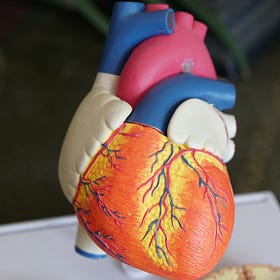Omega-3 and Omega-6 Fatty Acids Are Structurally Similar, But They Activate Highly Different Biological Responses.
Just a simple positional change in one chemical’s bond structure can wreak much havoc on our health.
We tend to think of and describe chemicals in ways that we can attempt to understand it better. The running joke that we have about dihydrogen monoxide is, for example, according to this article:
Dihydrogen monoxide is colorless, odorless, tasteless, and kills uncounted thousands of people every year. Most of these deaths are caused by accidental inhalation of DHMO, but the dangers of dihydrogen monoxide do not end there. Prolonged exposure to its solid form causes severe tissue damage. Symptoms of DHMO ingestion can include excessive sweating and urination, and possibly a bloated feeling, nausea, vomiting and body electrolyte imbalance. For those who have become dependent, DHMO withdrawal means certain death.
If we don’t have any basic chemistry knowledge about what “dihydrogen monoxide” means, we can’t tell that it just refers to water. “Water” is so much easier for the regular layperson to relate to than “dihydrogen monoxide” is.
The article goes further on to add that:
Dihydrogen monoxide:
is also known as hydroxyl acid, and is the major component of acid rain.
contributes to the “greenhouse effect.”
may cause severe burns.
contributes to the erosion of our natural landscape.
accelerates corrosion and rusting of many metals.
may cause electrical failures and decreased effectiveness of automobile brakes.
has been found in excised tumors of terminal cancer patients.
Again, if we don’t know what it is, we’ll be forced to think that it is some strange, scary substance.
But it isn’t. It’s just water. And even then, the presence of water can be pretty dangerous to certain operations that go on in everyday life.
But if people do fall over themselves with a lack of knowledge about what dihydrogen monoxide is, then how much more likely is it that we won’t know what other funky-sounding chemicals do in their bodies? Much less even figure out what’s useful and what isn’t?
It’s just a number, after all.
The numbers in a chemical name are part of a standardised naming convention. They do indicate where the chemical bonds are on a specific chemical.
We know that the omega-3 and the omega-6 fatty acids exist as unsaturated fatty acids, meaning that their entire structure will consist of one (or more) carbon-carbon double bonds (C=C).
In the omega-3 fatty acid, there will always be a C=C double bond that exists between the 3rd and the 4th carbon atom from the terminal carbon end (hence omega) carbon atom, which is why we call it the omega-3 fatty acid.
In the omega-6 fatty acid, the C=C double bond would be ubiquitous between the 6th and the 7th carbon atom from the terminal carbon end.
Again, just the position of that C=C double bond dictates how the fatty acid is able to interact with a cell to stimulate a biochemical response.
The difference in the location of the C=C double bonds results in these two types of fatty acids possessing vastly different biochemical functions in the body.
The omega-3 fatty acids are thought to be anti-inflammatory:
EPA and DHA are potent anti-inflammatory mediators that work on decreasing the intensity of the immune system’s inflammation response by signalling cells to downregulate their pro-inflammatory pathway (nuclear factor kappa B, or NF-κB). NF-κB is a major cellular pathway that expresses genes to stimulate the production of pro-inflammatory cytokines and contribute to the development of an inflammation signal in our body.
Whereas the omega-6 fatty acids are thought to be pro-inflammatory, based on the fact that they are converted into arachidonic acid within the body:
In humans on a Western diet, the omega-6 polyunsaturated fatty acid arachidonic acid (ARA) makes a significant contribution to the fatty acids present in the membrane phospholipids of cells involved in inflammation. ARA is a precursor to a number of potent pro-inflammatory mediators including well described prostaglandins and leukotrienes, which has led to the development of anti-inflammatory pharmaceuticals that target the ARA pathway to successfully control inflammation. Hence, it is commonly believed that increasing dietary intake of the omega-6 fatty acids ARA or its precursor linoleic acid (LA) will increase inflammation.
The location of the C=C double bond is therefore a crucial factor in determining how well the inflammation signal is regulated.
We want a properly regulated inflammation signal in our body for an appropriate immune response when the immune response is necessary, such as in the repair of injured body parts or when the immune defences are required to prevent a viral or bacterial infection from occurring.
Much like how we want to set the brightness of our computer or phone screens "just right”. Bright enough for us to see what’s on the screen, but not too bright that it hurts our eyes to even look at the screen.
Unfortunately, in today’s modern diets, we tend to be consuming way more omega-6 fatty acids than we are consuming omega-3 fatty acids. In fact, it is mentioned in this article that an adherence to Western diets may be destructive to our health in the long term:
amounts of omega-6 polyunsaturated fatty acids (PUFA) and a very high omega-6/omega-3 ratio, as is found in today’s Western diets, promote the pathogenesis of many diseases, including cardiovascular disease, cancer, and inflammatory and autoimmune diseases.
And therein lies the problem. It’s the ratio that matters. It’s not about how much we’re consuming of each, but how much we’re consuming relative to each other. We need to strike that balance and maintain that tension.
Sure, there are minimum requirements for each, but most of us tend to be consuming omega-6s in high excess relative to the omega-3s. And that’s how the Western diet can hurt.
Of course, marketing spins will start trumpeting half truths, such as:
Not all omega-6 fatty acids are bad, (therefore this vegetable oil is “healthy” for your heart).
Consume more omega-3 fatty acids for heart health, (even if we don’t know how badly oxidised they are as a result of cooking or poor manufacturing practices).
That actually complicates matters further.
Because if we were to look at the ratio of unadulterated omega-3 and omega-6 fatty acids that we were consuming, how certain are we that we aren’t consuming the bad stuff?
Why Hydrogenated Vegetable Oil Isn't Good News For Our Health.
We’ve had butter around for so long. Some say it was discovered in 8000 BC in ancient Africa, when a sheepskin container of milk was jostled around in land travel, resulting in the development of a curdled mixture that became known as butter. Indian cuisine makes extensive use of a clarified butter known as
And the irony of the situation with regards to heart health is that it isn’t really these omega-3s and omega-6s that deal the final fatal blow to the body. However, a sustained excess of omega-6s will provide a stronger baseline inflammatory signal that provides the sustained impetus for the surviving macrophages entrapped within an atherosclerotic plaque to digest their plaque away and escape their prison - that’s the real concern for patients with heart disease.
Now, Seriously, What's So Tricky About Cholesterol?
This article is the final part of a 3 part miniseries. The first 2 parts can be found at: Medical science has been talking about cholesterol and its links to heart disease for years. People who are at risk of heart failure are invariably prescribed medicines such as
While we're looking at the whole issue of heart disease, we’d also have to consider that ability of these macrophages to conduct efferocytosis (or the rate of atherosclerotic plaque elimination via macrophage activity) is reduced. Because the prevailing pro-inflammatory signal causes them to be doing stuff related to digesting away the plaque more than clearing out the waste in the plaque.
Efferocytosis And Its Oft-Unstated Role In Artery Clogging.
The word “efferocytosis” isn’t one that is frequently thrown about these days. Most heart disease patients would not have heard of this word before, because rarely is it (if ever) discussed by their doctors. Oddly, though, it is a biological process that occurs naturally within our bodies. Much like autophagy, which more people would have heard of:
Therefore, switching up the omega-3 to omega-6 dietary ratios are just one compulsory lifestyle change that a heart disease patient ought to be making. But then it ain’t promoting efferocytosis.
One of the more effective ways to promote efferocytosis is via the upregulation of the nuclear respiratory factor 2 pathway, as is outlined here, and which I have discussed here as well:
Antioxidant Protection In The Body Begins From Within The Cell.
Our body is constantly in a tug of war between reduction and oxidation (redox), which basically comprises multiple reactions where electrons are being transferred from one component to another. We oxidise a component when we remove electrons from it, and we reduce another component when we add electrons onto it.
It actually takes a combination of things. Addressing the inflammatory signalling is one aspect of it; supporting the clearance of the dead cells in the atherosclerotic plaque is another.
Otherwise, when the macrophages entrapped within the plaque do force the plaque to rupture — then, someone would be due for a heart attack, a stroke, or deep vein thrombosis. Those aren’t pleasant ways to die at all.
And there’d be quite a fair bit of psychological trauma associated with just surviving one of those incidents.
We’d always have to aim for a balance in whatever we’re eating or doing in life.
After all, drinking too much water can lead to water poisoning. Can it not?
Do feel free to head over to What Nutrients Support Digestion And Detox In Our Body? as well as 10 Nutrients That Support A Healthy Heart to see a comprehensive list of nutrients that can help to support optimal healthy heart functions in our body!
Also, do feel free to share this article and hit the “subscribe” button to get more updates about the economics and science concepts in nutrition and health, all deconstructed nicely for your convenient perusal!






